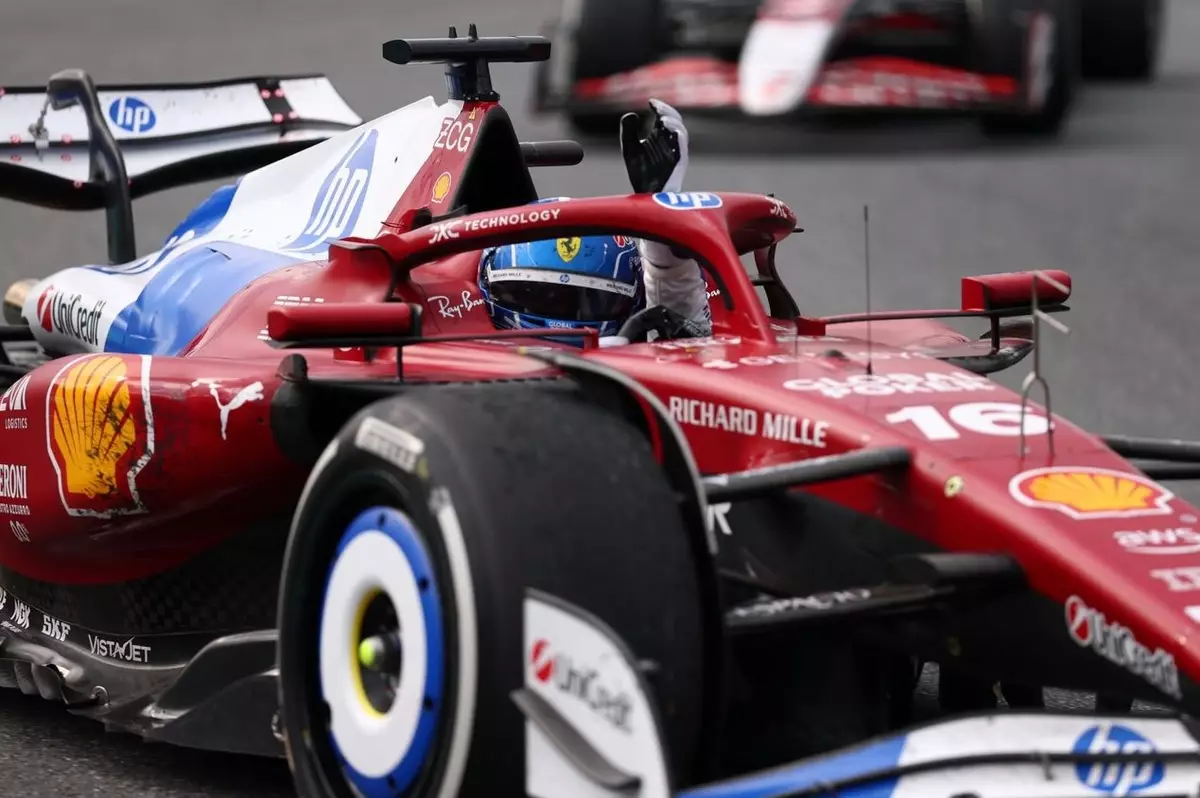In the high-octane world of Formula 1, where fractions of a second can define careers, the Miami Grand Prix became a microcosm of larger themes surrounding team dynamics and the pressure of competition. Charles Leclerc’s comments post-race highlight not just an individual’s perspective but an intricate web of relationships and strategic decision-making that underpin the sport. Leclerc’s experience during the race, especially his interactions with teammate Lewis Hamilton, sheds light on the complex nature of teamwork in a competitive environment.
During the race, Hamilton’s audible frustrations over team radio were clear, as he argued that he should be allowed to pass Leclerc, having the advantage of medium tyres compared to Leclerc’s harder compound. This discomfort indicates not only a battle for position but also the emotional toll that inter-team rivalries can take. Leclerc’s insistence that he harbored “no bad feelings” towards Hamilton might serve as a soothing balm for the media frenzy that often follows such disputes, but it also underscores the delicate balance between camaraderie and competition in elite racing.
Understanding the Underlying Issues
Leclerc’s acknowledgment of Ferrari’s shortcomings in strategic calls is crucial. In high-pressure situations, every decision is magnified. The Monegasque driver’s assertion that he “would have done the same thing” as Hamilton suggests an awareness of shared objectives even amidst ego-driven pursuits for glory. Interestingly, he downplays the emotionality of the situation by suggesting that poor communication was at the heart of their strategic difficulties. His call for better preemptive discussions reveals an essential truth in racing: clarity and coherence often dictate success.
Moreover, the racing environment itself amplifies the effects of these tensions. For instance, Leclerc found himself battling not just Hamilton, but also the pressure of maintaining tire performance while defending his position. The real implication here isn’t merely about swapped positions; it’s about the strategic fabric of the team and the inevitable emotional upheaval that accompanies such decisions. Leclerc’s struggles illustrate how the chaotic essence of racing intertwines with personal resilience and team strategy.
Improvements and Expectations
What stands out in Leclerc’s analysis is his call for introspection. He noted that even if the pace of their cars was not competitive enough, the event served as an opportunity for Ferrari to regroup and reassess their approach. This desire for improvement is not just about performance metrics; it’s about fostering a culture that embraces growth from mistakes. Leclerc’s insight into team’s need for more robust strategy discussions before making lightning-fast decisions could be a wake-up call for Ferrari’s management, highlighting how pivotal each race is for their team ethos.
Moreover, internal strife can pose a risk not just to individual relationships but to the team’s overall synergy. The interactions during the race, marked by tensions and quick decisions, can easily spiral into detrimental outcomes if not managed effectively. Leclerc’s acknowledgment of these factors speaks volumes about his emotional intelligence and maturity as he navigates the high-stakes ladder of F1 racing.
The Human Element in Racing
This situation brings into sharp focus the human element that often gets overshadowed by data and performance statistics in the relentless pursuit of victory. Drivers are not only racing machines; they are complex individuals with emotions, aspirations, and the pressure of being part of a larger team. Every radio message, every on-track decision, is laden with implications that resonate beyond the immediate outcome of a race.
Leclerc’s reflections on the frustration of racing for minor points reveal the mental strain that can accompany professional sports. These moments highlight that success in Formula 1 is not solely determined by car performance or speed but also by the ability to manage interpersonal dynamics effectively. The lessons drawn from the Miami Grand Prix extend beyond the specifics of any individual race and serve as reminders of the importance of cohesive teamwork, communication, and the art of strategic racing.
The Miami Grand Prix didn’t just feature a battle between two renowned drivers; it illuminated the symbiotic relationship between competition and collaboration, presenting a valuable narrative that resonates well beyond the racetrack.


Napsat komentář